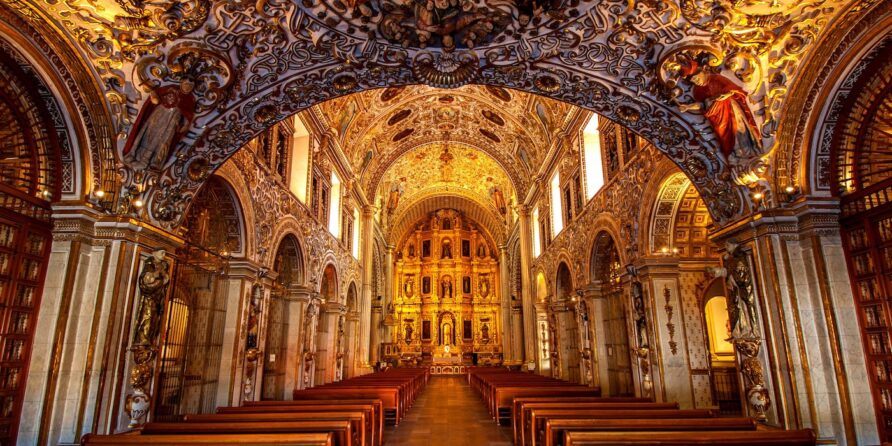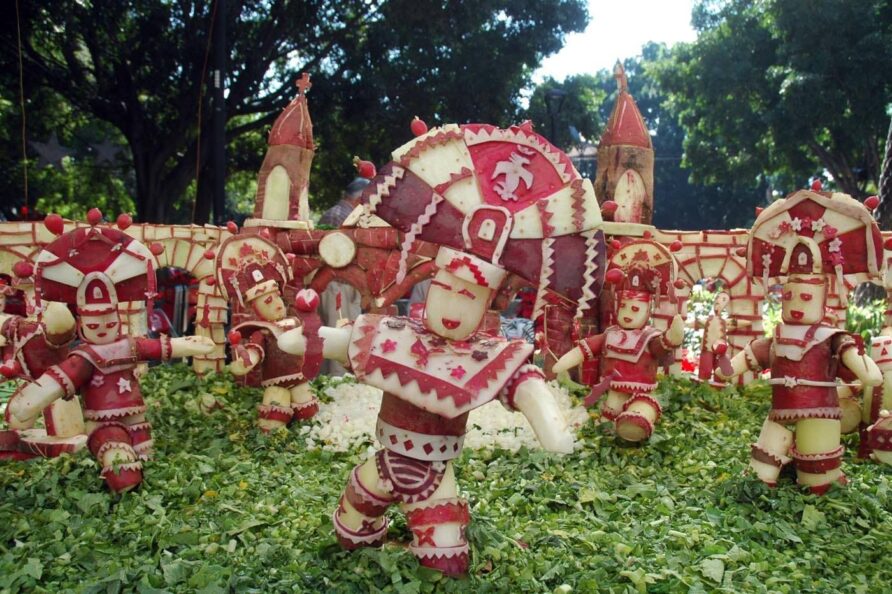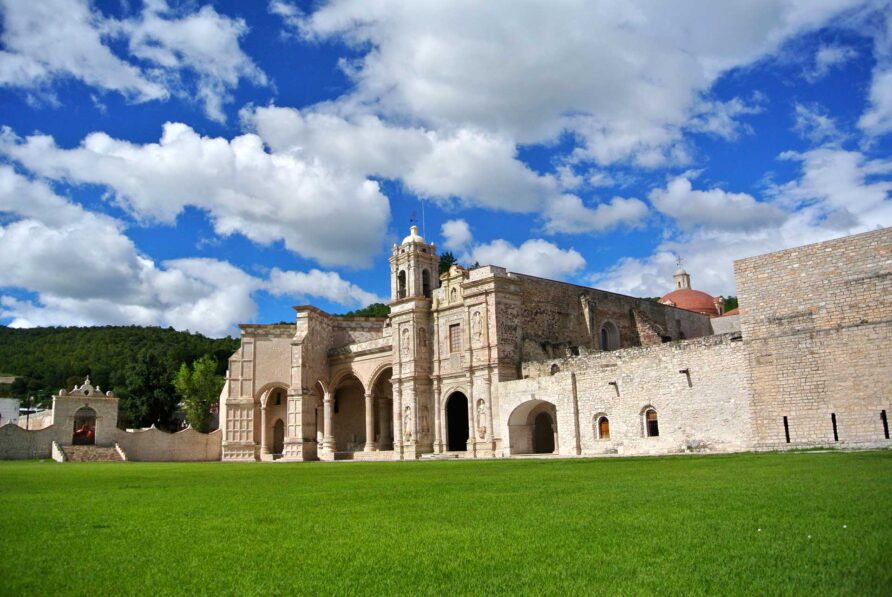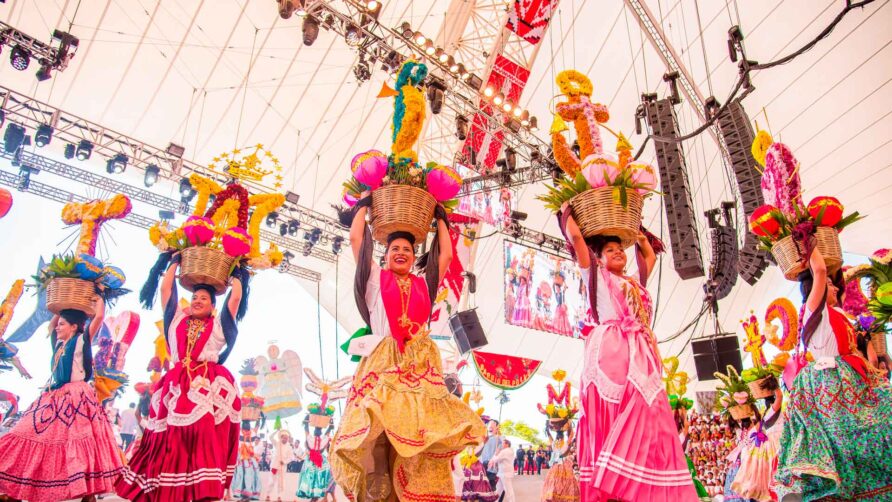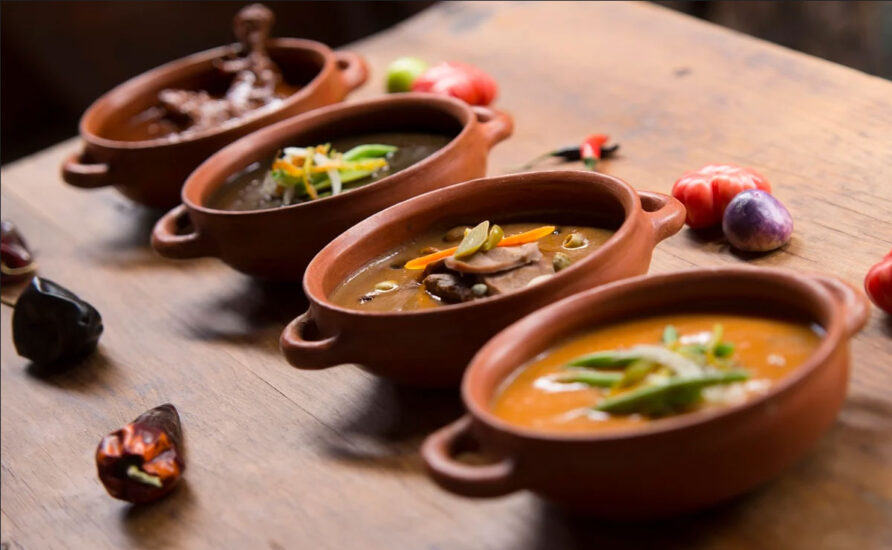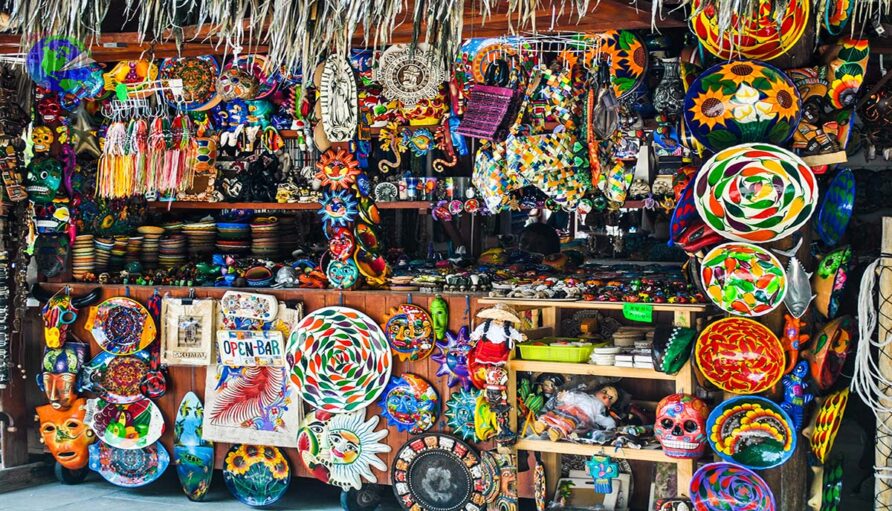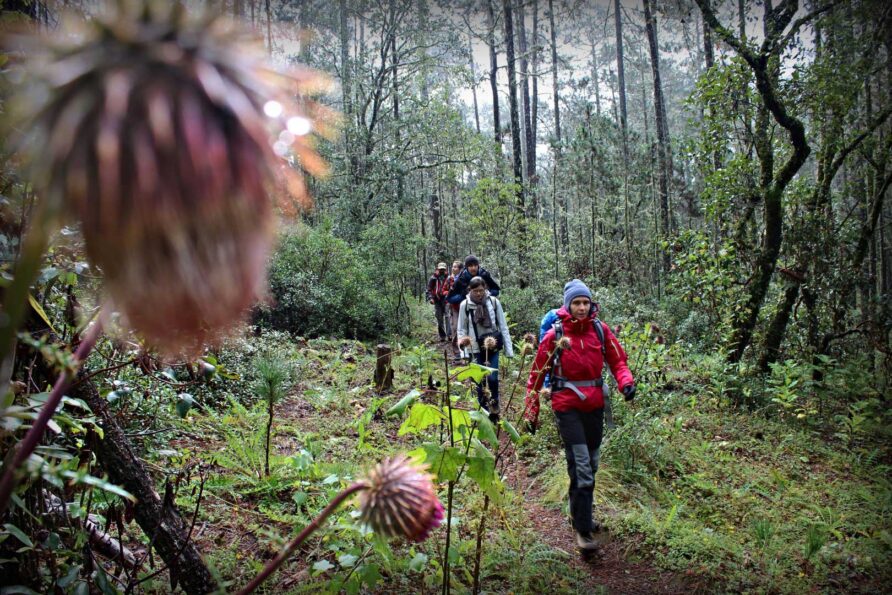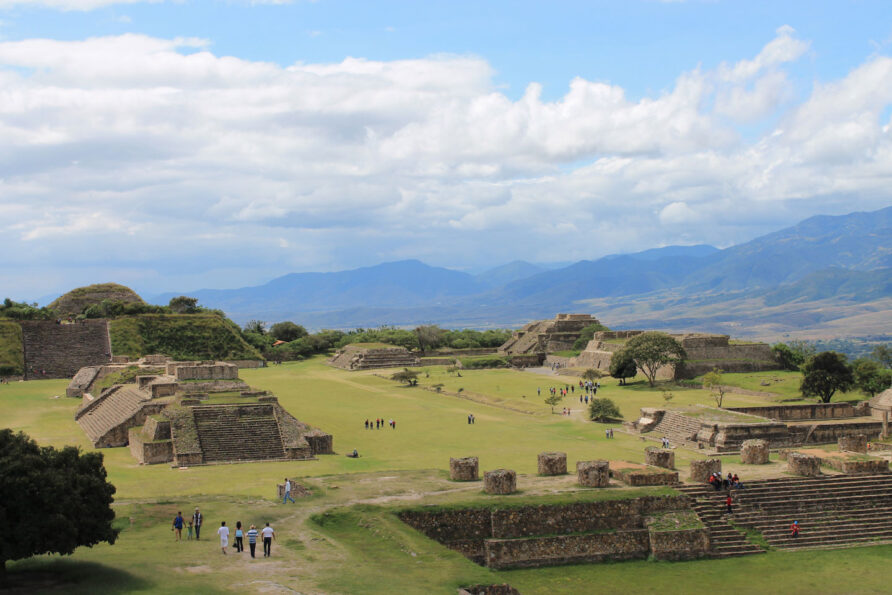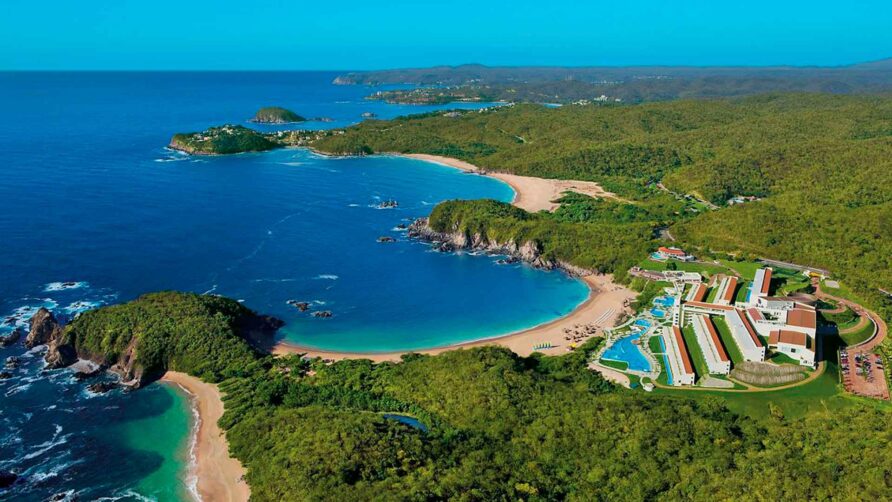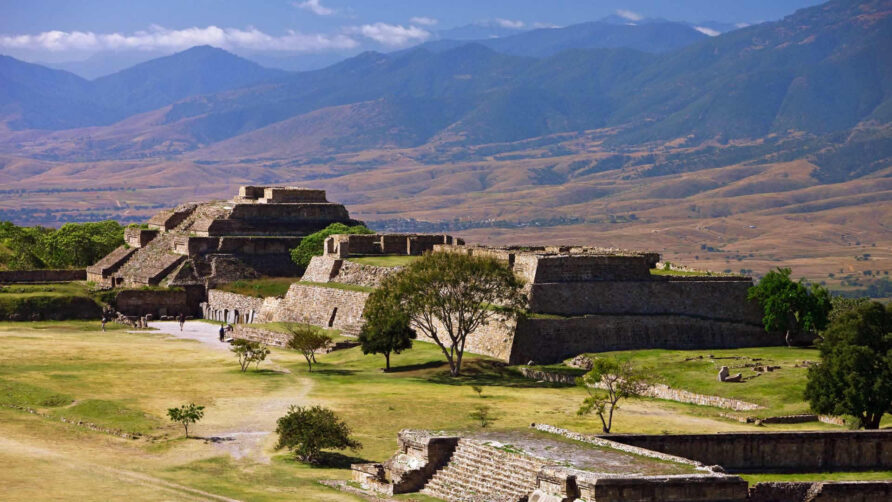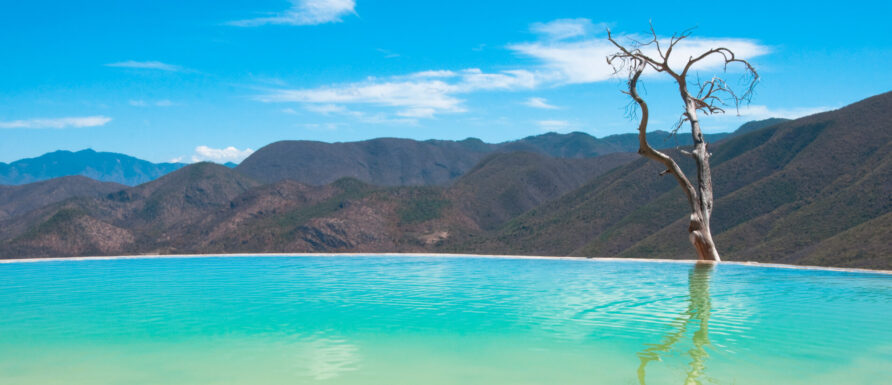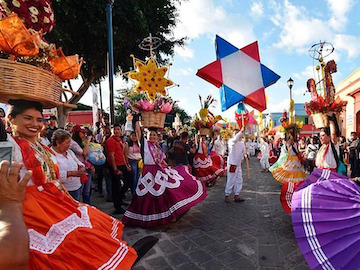Ro-House » Oaxaca »Santo Domingo Cultural Center
He Santo Domingo Cultural Center It is a cultural complex that is located in what was one of the most important convents in the colony. It is a large convent in which the Museum of the Cultures of Oaxaca, the Fray Francisco de Burgoa Library and the Ethnobotanical Garden have been established.
The Néstor Sánchez Public Newspaper Library is located in a building that is part of the complex but dates from the 19th century. Apart from all these institutions brought together, the Santo Domingo Cultural Center has multipurpose spaces in the former convent, in which temporary exhibitions, conferences, courses, book presentations and concerts are held, among many other activities.

Ex-convent of Santo Domingo
The former convent of Santo Domingo de Guzmán is perhaps the largest and most important standing viceregal construction in Mexico and probably in all of America, due to its monumentality, its artistic value and the role it played as a center for evangelization and cultural promotion. for the territory of what is currently the State of Oaxaca. Santo Domingo is part of the historic center of the City of Oaxaca, which has been declared a cultural heritage of humanity by the United Nations Organization for Education and Culture.

The construction of the convent began in the middle of the 16th century and would last until the beginning of the 17th century, on an area that reached 40,000 square meters. During the colony, Santo Domingo was the center of an evangelization practically monopolized by the Dominican order throughout the State of Oaxaca.
As a result of independence and when the confiscation of the assets of the clergy was decreed with the Reform Laws, the building was evicted and occupied by the armed forces. The Temple was closed to worship in 1866 and reopened in 1902, but the building that occupied the convent remained in the hands of the Mexican army. Parts of it were gradually transferred until in 1993, the army definitively evicted the property and it was used for cultural purposes.
During four years, architectural and movable property restoration works, museum planning, historical research, anthropology and the natural environment of the Oaxacan territory were carried out, thanks to the joint effort of the federal and state governments, private initiative and civil society.
Remodeling
With the purpose of rescuing the original appearance of the building, during more than fifty months, at least six thousand square meters of construction and ten thousand square meters of flattening were restored Direct employment was given to around a thousand people in the most intense seasons of the process restoration; Some construction techniques used by the Dominican order in the 6th century were recovered and a set of trades that were little practiced by Oaxacan artisans and workers such as ironwork, stonework, and plasterwork were removed from oblivion.

Of the restoration work carried out in Santo Domingo, the restitution of six thousand square meters of vaults stands out, almost 50 percent of the original total. This required the intervention of a large interdisciplinary team, made up of archaeologists, architects and historians, among others, who undertook the task of investigating, both in the archives of the cities of Oaxaca and Mexico, as well as through the realization of coves in walls and floors, what were the original characteristics of the building, in order to justify, from the historical point of view, all the architectural replacements that took place.
Finally, on July 24, 1998, the Santo Domingo Cultural Center opened its doors to the public, which integrates activities of four institutions: the Museum of Cultures of Oaxaca, the Ethnobotanical Historical Garden of Oaxaca, the Library "Fray Francisco de Burgoa" , the Public Newspaper Library "Periodista Néstor Sánchez Hernández", in addition to the areas dedicated to conferences, congresses, seminars, temporary exhibitions, courses, concerts, etc.
The museum
On the top floor is the Museum of the Cultures of Oaxaca, through a new museum language and along 14 permanent exhibition rooms and 13 thematic rooms, visitors are provided with a broad panorama of the historical evolution in the entity. In this new enclosure, visitors can appreciate the permanent and determining presence of indigenous groups in shaping the current physiognomy of Oaxacan society.
In its rooms it is possible to admire the most outstanding archaeological pieces from Monte Alban (for example, the world famous jewels from Tomb 7) Mitla, Yagul, Lambityeco, Dainzú, Huijazoo and other pre-Hispanic sites, as well as various objects that account for the traits and continuity of the millenary culture of Zapotecs, Mixtecs, Mixes, Huaves, Triqui and other ethnic groups of the State of Oaxaca, emphasizing that these groups are a dynamic part of the Oaxacan daily happening.

This site has been organized around a museum proposal that seeks to simultaneously meet the informational requirements of different types of visitors (students, tourists, researchers, etc.). A novel aspect is the incorporation in the rooms of computer monitors where in an agile and even fun way it is possible to delve into some aspect of the history and anthropology of the entity.
The museum is divided into fourteen rooms that cover 10 thousand years of the state's history, from the emergence of the first sedentary settlements and the flourishing of the great pre-Hispanic cultures, passing through different aspects of the conquest and the colony, the independent era, to reach the twentieth century. Room 3 stands out, where the jewels found in the early 1930s are on display in Tomb 7 of Monte Albán, considered one of the most important treasures in all of Mesoamerica.
The so-called "interactive rooms" are located in rooms V to VII in thirteen small cells. They have been conceived as spaces in which the public can touch the objects they appreciate and obtain more information, with the support of multimedia technology. They are dedicated to different craft trades in Oaxaca: textiles, ceramics, goldsmithing, wood carving and sculptures, saddlery, tinsmithing, etc .; the production of natural dyes, such as cochineal grana; traditional medicine; music; gastronomy; and the production of beverages such as mezcal, among others.
Ethnobotanical Garden

The next cultural space of this complex, is the Ethnobotanical Historical Garden of Oaxaca, whose objective is to make known the abundance and peculiarities of the flora of the State, traditional crops, and rescue the knowledge that the indigenous peoples of Oaxaca have about the flora of your region.
By showing live links between the biological and ethnic diversity of Oaxaca, the Ethnobotanical Garden complements and enriches the Museum of Cultures of Oaxaca and the "Francisco de Burgoa" Library. This relationship between the Garden and the Cultural Center is unprecedented in Mexico.
Library
Another space of the new Santo Domingo de Oaxaca Cultural Center is the "Fray Francisco de Burgoa" Library, formed with the historical heritage of the "Benito Juárez" Autonomous University of Oaxaca. The library occupies the space of the old chapel of the Third Order, one of the largest rooms in the Ex-Convent. It has more than 23 thousand volumes published between 1484 and 1940, mostly collections owned by different religious orders settled in Oaxaca.
These collections were seized in the 19th century, following the enactment of the Reform Laws. Among its most precious treasures are eleven incunabula, some early Mexican prints, a Latin manuscript by Fray Bartolomé de las Casas and the work: “Comments on the philosophy of Aristotle” by Juan Versor, published in Latin in 1484. It also has the important bibliographic collections of Benito Juárez Maza, Matías Romero, Jacobo Dalevuelta and Aurelio Valdivieso, whose consultation is reserved for researchers.

The Public Newspaper Library "Journalist Néstor Sánchez Hernández", located in the old cavalry building, built by the Dominican fathers for the Mexican army in 1902, in gratitude for having returned the Temple of Santo Domingo to that religious order, has two spacious rooms for reading, where it is possible to consult the main newspapers of local and national circulation, as well as various publications in other languages. The first contains newspapers and magazines of the current day and month. In the second, the oldest, among which are newspapers in the region dating from the middle of the last century, and a newspaper with national circulation since 1978.
In addition, the center has several rooms, classrooms and an auditorium, in which exhibitions, congresses, forums, concerts, courses, workshops, recitals, stage presentations, book fairs and a wide range of activities are organized. A cafeteria and a store-bookstore complement the services of a center that is destined to further enrich the artistic and cultural life of the city of Oaxaca.

More Tourist Attractions in Oaxaca
In the state of Oaxaca there are many customs and traditions throughout the year, and within the state, said that they have the same purpose of celebration but with different things, in fact from one region to another or even more from one town to another, the Customs vary for perhaps details but that is what makes them authentic. Oaxaca has deep-rooted customs and traditions. All the holidays are celebrated, the profane and the religious ones. The festival calendar is extensive due to the diversity of ethnic groups, which they still conserve.
Oaxaca City, the state capital, is famous for its architecture and rich cultural traditions. Oaxaca also has a splendid and varied cuisine and a spring climate throughout the year. UNESCO declared the city a Cultural Heritage of Humanity. Oaxaca is the most diverse state in Mexico. It has peaks that reach more than 3,000 meters in height, caverns that are among the deepest in the world, pristine beaches, secluded forests and sunny valleys. Oaxaca is rich in traditions and customs and has the largest ethnic population in Mexico.
In Oaxaca we are proud to have 5 communities that have been awarded the title of Magic Towns of Mexico, a Magic Town is a town that has symbolic attributes, legends, history, transcendent events, everyday life, in short magic that they emanate in each of their socio-cultural manifestations, and that today mean a great opportunity for tourist use. The Magical Towns Program contributes to revalue a group of populations in the country that have always been in the collective imagination of the nation as a whole and that represent fresh and different alternatives for national and foreign visitors.
Oaxaca's culinary tradition is extraordinary and deeply rooted. There are fourteen different ethnic groups, with their own dishes. It is an area of incomparable wealth for the tourist interested in gastronomy, ethnology and culture in general. Oaxaca is the land of mezcal, tlayudas and the famous seven moles. You have to dedicate several days to it. Oaxacan gastronomy is one of the cultural manifestations that identify and define its people, due to its variety, richness and complexity that have been preserved through the centuries. The best way to enjoy Oaxacan food is by tasting it, from the “strong” dishes that are used to enjoying at lunchtime; like the traditional Oaxacan snacks that can be enjoyed at any time of the day.
The Guelaguetza is an ancient tradition with pre-Hispanic roots related to agricultural ceremonies of gratitude to the gods for the arrival of the rains and the lifting of the harvest at the end of July and is the largest festival in Oaxaca. La Guelaguetza is a celebration of gratitude for the arrival of the rains and the harvests, in which representatives from all regions of the state gather in the capital to share their culture through dances, crafts and food.
The vast Oaxacan cuisine is distinguished by its tradition and the use of regional ingredients. Not for nothing has it positioned itself as the Best Tourist City in the World and the Best Gourmet Destination. In the presentation of the 2021 edition of The Mexico Gastronomic Guide "The Great Restaurants of Mexico" 278 restaurants located throughout the Mexican Republic were recognized, on this occasion, there were 16 Oaxacan restaurants that were placed in the list .
Crafts in Oaxaca are so varied and of such good quality that they have become a tourist attraction. The ancestral traditions, the diversity in the ethnic groups, as well as the richness in the history of the state have been manifested in the great diversity of creations of more than half a million artisans that are registered in Oaxaca. In the center of the state is the City of Oaxaca, a fascinating and hospitable capital in whose surroundings various towns are located, each with its own personality and craft tradition, accompanied by their respective customs, festivals and dishes.
An ideal space for Alternative Tourism, Oaxaca offers activities such as walking, mountain biking, rappelling, climbing, zip-lining, horseback riding, observation of flora and fauna and more, in close contact with nature. The visitor can also witness the various aspects of local life, savor the gastronomy and enjoy the warmth of its people, as well as an offer of accommodation in hotels, ecotourism cabins, local houses or excellent camping areas. In its varied geography, it brings together not only a vast biodiversity, considered among the largest in the world, but also insurmountable cultural and ethnic riches, and the most different and beautiful natural settings.
Oaxaca is famous throughout the world for its archaeological sites and the history they keep. Discover Monte Alban, Mitla, Yagul and more of these remote sites, which have made Oaxaca a World Heritage city, according to Unesco. The original Zapotec and Mixtec peoples of Oaxaca lived in the cities and religious centers of the valley of this city until the time of Spanish colonization. Today, there are still vestiges of these towns and places where you can meet them.
The beaches of the coast of the state of Oaxaca are among the most beautiful and complete in Mexico, thanks to a developing tourist infrastructure and the rich gastronomy of the Pacific. Along the 533 kilometers of coastline, the beaches of Oaxaca offer a wide variety of activities for lovers of water sports: snorkeling, diving, sport fishing, surfing, among others ... there is something for everyone!
Places such as Puerto Escondido, Mazunte, Zipolite, Carrizalillo, Puerto Ángel or the beaches of Huatulco will offer you the possibility of contemplating beautiful sunsets, delighting in intense adventure tourism or witnessing the exciting release of newborn turtles.
Monte Albán is the most important archaeological zone of the Oaxacan entity, of unique regional importance due to the religious, political and economic control that the Zapotec state exercised over the population of the Valley of Oaxaca for more than thirteen centuries. It has been named by UNESCO as Cultural Heritage of Humanity along with the city of Oaxaca on December 11, 1987. The heritage of the Zapotec world reaches us through the magnificent archaeological sites designed in the Valley of Oaxaca. Of these, the city of Monte Albán stands out for its enormous importance as an economic, political and religious hub (it was the first urban complex in Mesoamerica); by its extension, almost as big as the current capital of Oaxaca; and for its long life, started around 500 BC and concluded around 850 AD
The City of Oaxaca is a destination that offers a great variety of tourist attractions and charms that leave anyone surprised. However, there are other places that are also worth knowing and are in the surroundings of the city, in whose surroundings various populations are located, each with its own personality and artisan tradition, accompanied by their respective customs, festivals and dishes. .
The name mezcal has its roots in one of the ancient native languages of the area and translates as 'agave (also known as maguey) cooked'. Although pre-Hispanic Oaxaqueños used maguey to make pulque (an undistilled alcoholic beverage), it seems that the real advances in mezcal production occurred when the Spanish arrived in Oaxaca; by bringing with them their knowledge of distillation processes.

Guided Tours in Oaxaca



